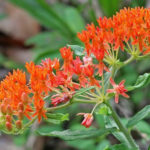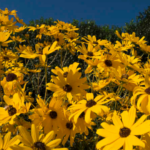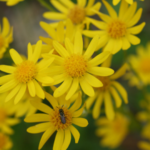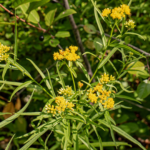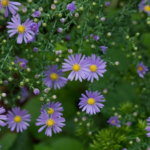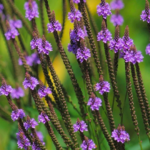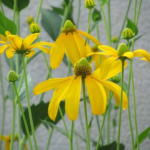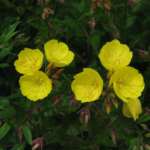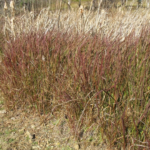Piedmont Prairie
Rewilding campus to improve biodiversity and pollinator abundance.
The Piedmont Prairie at NC State restores native wildflowers and warm-season grasses that once dominated this region. Located next to the Sullivan Shops Building III and formerly covered in turfgrass, this prairie has undergone a rewilding to provide vast ecosystem and wildlife benefits, such as improving biodiversity and pollinator abundance.
Planted in April 2024 by staff and volunteers with funding from the NC State Sustainability Fund, the Piedmont Prairie is part of NC State’s Bee Campus USA commitment to enhance and monitor pollinator habitat on campus. This includes increasing the abundance of native plants and providing nesting sites.
Why a Prairie?
Prairies historically dominated the Piedmont ecoregion, providing abundant food, shelter and nesting habitat for wildlife while offering vital ecosystem services. Historically stewarded by Indigenous communities and grazing animals, these ecosystems have significantly declined. Reintroducing these ecosystems is crucial for restoring and protecting wildlife, especially pollinators.
Rewilding the turfgrass into this prairie garden provides numerous benefits. Native species exhibit superior drought tolerance, while also playing a pivotal role in rain absorption, erosion reduction and mitigating stormwater runoff. Prairie gardens are also highly resilient against diseases and pests, reducing the need for harmful chemicals and requiring minimal management. Their low-maintenance nature reduces emissions by reducing the use of maintenance equipment and by sequestering carbon via their extensive root systems. Additionally, prairie gardens support remarkable wildlife habitats and substantially enhance biodiversity.
In contrast, heavily managed urban lawns do not provide sufficient resources for wildlife and often rely on harmful pesticides, herbicides and fertilizers for management. Prairie habitats provide greater plant diversity which translates to enhanced ecological health and resilience.
The Piedmont Prairie at NC State is a direct response to the urgent need for rewilding efforts in the Eastern United States, especially as the state of North Carolina is home to the most specialist bee species at 144 species. Moreover, urban expansion directly impacts habitat loss and declining native ecosystems, showing lower bee diversity and abundance. Prairie greenspaces like the Piedmont Prairie at NC State are critical to attracting diverse bee communities.
What’s Planted at the Prairie?
The Prairie includes:
- Perennial Native Plants: These long-lasting plants contribute to year-round blooms.
- Wildflowers: These play a crucial role in providing essential resources, such as pollen and nectar to foraging pollinators. The flower species were selected to consider the specific needs of imperiled pollinators, especially specialist species reliant on particular plants.
- Warm-season Grasses: These offer vital nesting habitat and materials for pollinators, benefitting numerous threatened ground-nesting species. Additionally, many grasses serve as larval hosts for butterfly and moth species, along with other insects.
- Wildlife Attraction: Beyond pollinators, the prairie attracts various wildlife, as its seeds serve as a food source for songbirds and small mammals.
Wildflowers:
Warm-Season Grasses:
